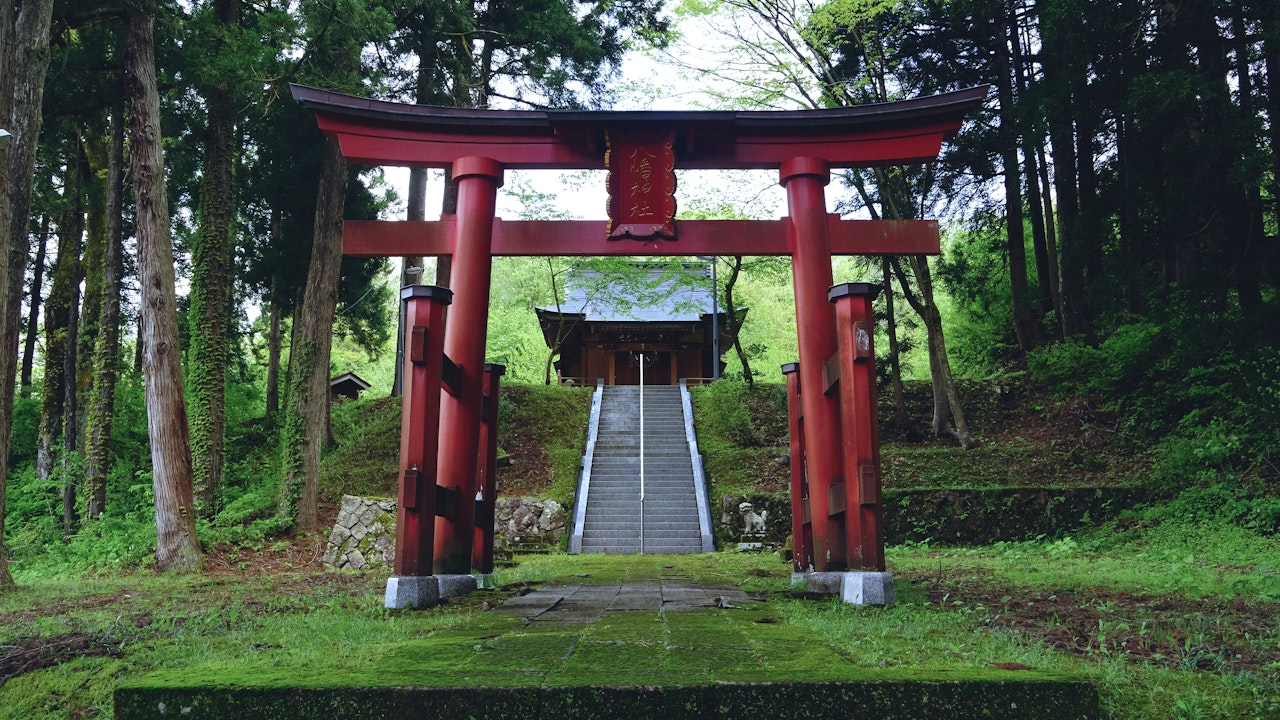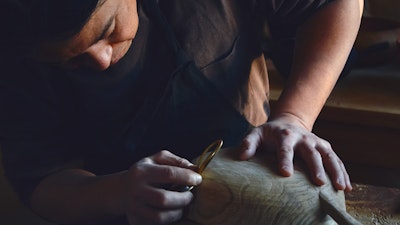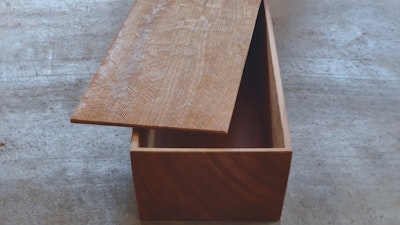Wood Carving Inspired by Nature with Takashi
- Lunch, Snacks, Coffee, & Tea
Pricing
- One Guest
- USD $1950
- Additional guest(s) (max 2)
- USD $840
Meet the Artist
Takashi's creations are known for their simplicity, functionality, and elegance. He handpicks his materials—often favoring locally felled green wood from nearby forests—and carves each piece to reveal and enhance its natural beauty over time. His work includes vessels, trays, bowls, spoons, and other objects that are both functional and aesthetically refined. Traditional Japanese hand tools such as chisels, planes, knives, and a lathe play a central role in his practice. His celebrated surface carvings are inspired by atomic patterns, and his invented language, Torremera, weaves poetic meaning into form.
Takashi emphasizes sharing not just technical skills but also the full atmosphere of making—the rhythm of carving, the silence of wood, and the dialogue with nature. He looks forward to welcoming you to his studio nestled among snowy mountains and rivers, guiding you to explore the area’s unique spirit, whether you're drawn to nature, art, food, or local shops.
VAWAA Includes:
- Develop a deeper relationship with wood, exploring not just the process of making, but also a new way of connecting with materials, time, and meaning.
- Start with a walk through the forest to select branches for carving, learning to handle tools like saws, knives, and rasps.
- Carve two tea tools: a chatsu (stick for guiding tea leaves) and a chasoku (scoop for presenting tea leaves), and reflect on the process during a tea gathering at a local shrine.
- Split and shape a freshly cut log using a saw and hatchet, then refine it into a functional tray or plate with chisels and planes. Feel the wood’s movement, grain, and tension as you develop skills in splitting, hollowing, smoothing, and tool care.
- Add surface carvings inspired by Takashi's work or create your own patterns and inscriptions in Torremera, exploring the connection between form and meaning. Receive guidance on creating steady lines for beginners and flowing compositions, letterform design, and visual storytelling for advanced participants.
- Observe microscopic life in Takashi’s garden pond using a biological microscope. Weather permitting, take a meditative walk along the nearby coast to collect driftwood and stones, or forage for wild vegetables and mushrooms in the nearby mountains.
- The experience adapts to seasonal conditions, with indoor carving on rainy days and snowshoe walks or snowfield tea gatherings during snowy weather.
- Visit a local papermaking studio in Oguni and learn to make traditional handmade paper (washi) for an additional fee.
- Immerse yourself in rural Japanese life, sharing home-cooked meals or tea with Takashi’s family, reading in his library, and exploring a nearby antique shop.
Explore Nagaoka, Niigata
Oguni is just 10 minutes from Tsukayama Train Station in the city of Nagaoka, which is famous for its large summer fireworks festival and as an archaeological site for Jomon-era pottery. Nearby Tokamachi hosts the Echigo-Tsumari Art Triennale, one of the world’s largest contemporary art festivals, with installations scattered across its villages and landscapes. Though relatively quiet on the global stage, the area remains deeply connected to its environment and traditions.

Additional Details
This session can be extended for up to 5 days for a more immersive and reflective experience. Please add a note in your booking request.
Children 10 years and older (accompanied by a guardian) who are comfortable using simple tools with guidance, elders, wheelchair users, and those with accessibility needs are warmly welcome. Carving sessions can be done seated, and most activities can be adjusted for comfort, though forest walks or snowshoeing may not be suitable for everyone. The studio is located on the ground floor.
Takashi speaks Japanese and English.
Guest Reviews
Carrie L., United States
The 3 days I spent learning wood carving with Takashi were amazing and extremely memorable. Not only is Takashi a wood carving master (seriously), he was a wonderful teacher in every way explaining carving techniques, tools and how to work with the wood. He’s also a lovely person to be with. He helped me execute the design of my fruit bowl from start - splitting the log! - to finish - carving my n Read more
Wren C., United States
This was truly one of the best experiences I’ve had traveling, ever.
Nestled in endless rice fields, rural Niigata is beautiful and tranquil, I highly recommend staying in the Airbnb next to Takashi’s workshop. I didn’t need to stress about travel logistics because Takashi picked me up and dropped me off at the nearest train station.
Takashi tailored my experience to my own goals as an art Read more




























